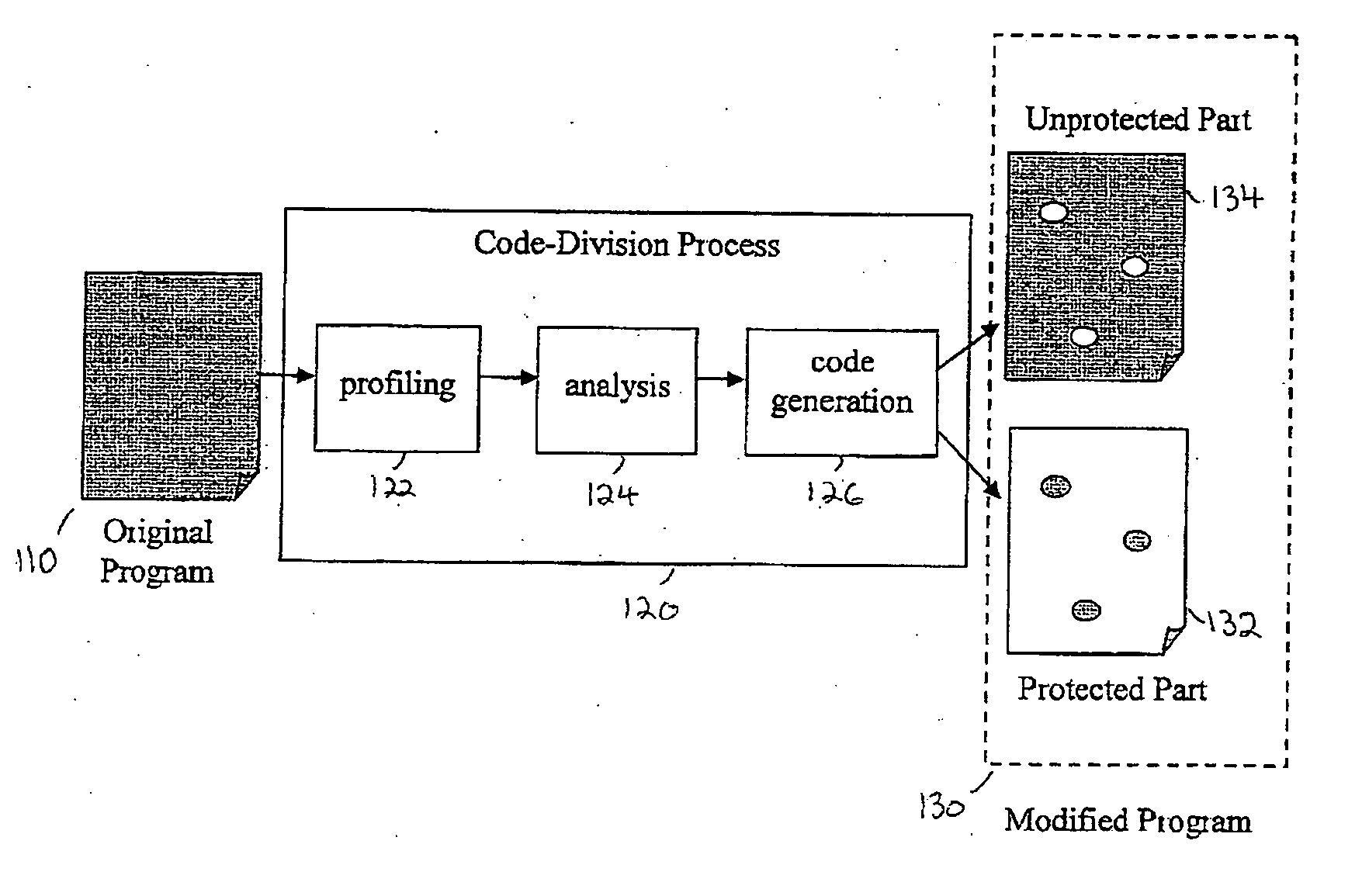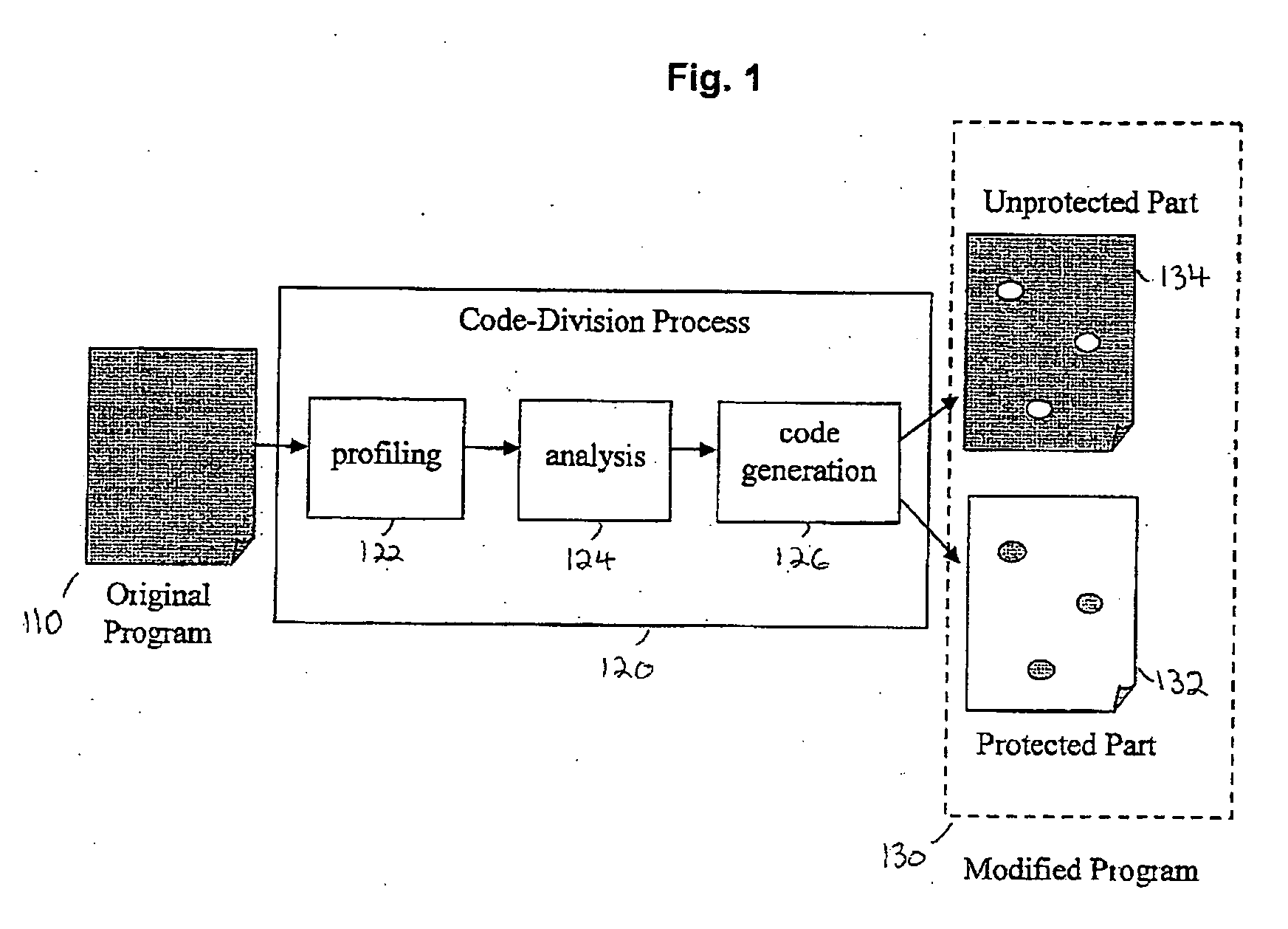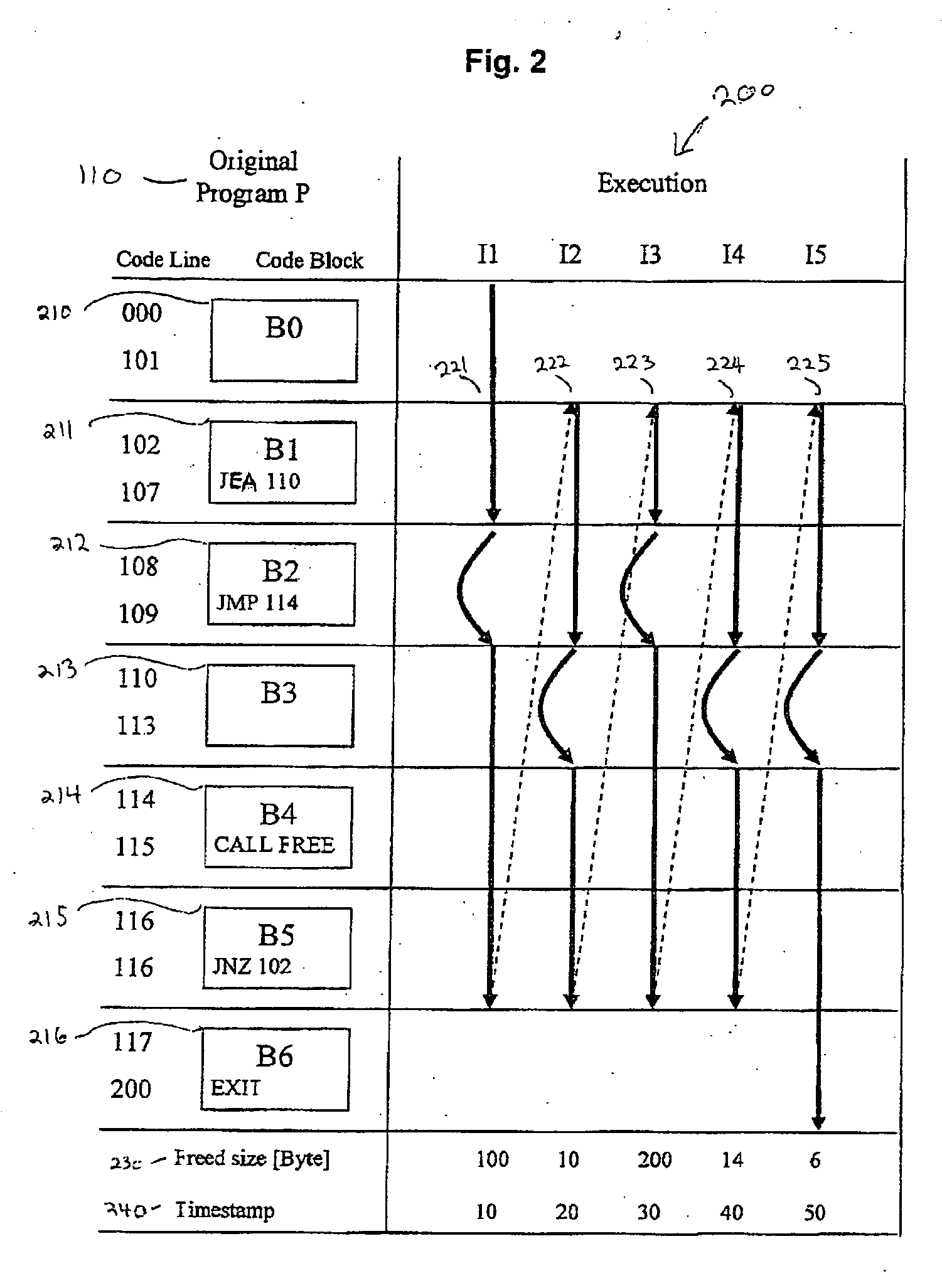System and method of controlling and monitoring computer program usage
a computer program and system technology, applied in the field of software protection, can solve the problems of consuming a consuming the minimum executing the protected part of the program may consume the minimal amount of resources on the protected processor, so as to complicate the reverse engineering task and complicate the efforts of the attacker
- Summary
- Abstract
- Description
- Claims
- Application Information
AI Technical Summary
Benefits of technology
Problems solved by technology
Method used
Image
Examples
Embodiment Construction
[0025] In the following detailed description, numerous specific details are set forth in order to provide a thorough understanding of the invention. For example, in accordance with some non-limiting demonstrative embodiments of the invention, an ANSI C compatible programming language, IA-32 (Intel Architecture for 32-bit processors) Intel Pentium 4 hardware architecture, Microsoft Windows XP Professional operating systems, and memory heap resource are assumed for clarity of demonstration. However, it will be understood by those of ordinary skill in the art that the present invention may be practiced without these specific details and that generalization for different programming languages, hardware architectures, operating systems, and resources is possible. In other instances, well-known methods, procedures, components, and circuits may not have been described in detail so as not to obscure the present invention.
[0026] Unless specifically stated otherwise, as apparent from the fol...
PUM
 Login to View More
Login to View More Abstract
Description
Claims
Application Information
 Login to View More
Login to View More - R&D
- Intellectual Property
- Life Sciences
- Materials
- Tech Scout
- Unparalleled Data Quality
- Higher Quality Content
- 60% Fewer Hallucinations
Browse by: Latest US Patents, China's latest patents, Technical Efficacy Thesaurus, Application Domain, Technology Topic, Popular Technical Reports.
© 2025 PatSnap. All rights reserved.Legal|Privacy policy|Modern Slavery Act Transparency Statement|Sitemap|About US| Contact US: help@patsnap.com



